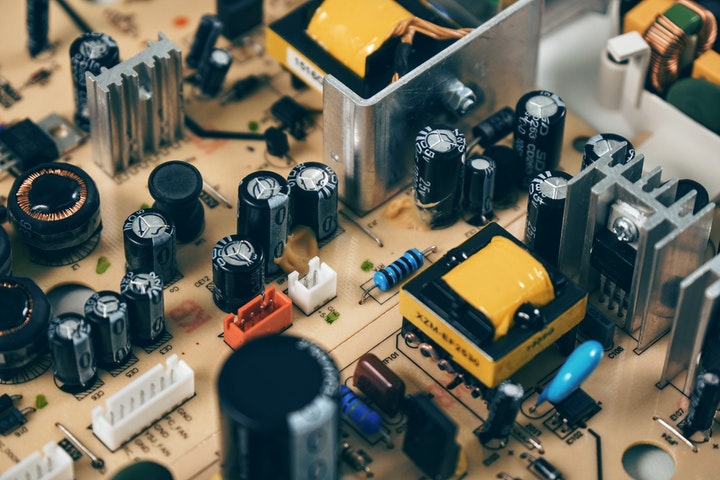Sometime in between the 2020 Union Budget in February and the announcement of the 20 lakh crore “Self-Reliant India” package in May, the Ministry of Electronics and Information Technology (MEITY) put out a gazette notification marked “Asaadhaaran” (extra ordinary). With an acronym SPECS, this one perhaps has the initial elements needed to be a game changer in the possibility of semiconductor component and chip manufacturing in India.
The 1 April 2020 notification seems to have not gotten much publicity in media so far, perhaps as Corona related news had taken over the main pages. This article gives the background to put SPECS in perspective, introduces the basic points and intends to not just trigger debate, but hopes to finally see some action, especially from potential investors
For those who may no be well versed with the world of semiconductor chips, a brief introduction is warranted. In our laptops to mobile phone to various electronic equipments, Integrated Circuit (IC) chips of varying degrees of complexity are a must. In these equipments there is the main processor chip (or multiple of them) with millions of transistors, but there are also many peripheral chips and components used to receive and send signals, support apps, display and so. Most of these are manufactured in “ultra clean” semiconductor fabrication facilities, known in short as fabs or foundries.
Fabs vary in the types and complexity of chips they can make, the complexity mostly driven by smallest size of transistors it can mass produce and integrate on a single chip. Needless to say, more the complexity of the chip, more the cost to establish and even run such a fab.
In India, at present, there is only the ISRO owned Semi-Conductor Laboratory (SCL) that can be considered anywhere close to a fab – but the technology supported is relatively old-school, and products supported are limited as well. Institutes like IISc and IITs have fabs – CENSE at IISc is an example – which can fabricate latest technology components, but they typically use tools which can one time “write” these to few vertical levels as compared to mass produce in a “print using a template” fashion to many more vertical levels which are needed for mid and high end products — in other words, the aim of CENSE kind institutions seems to be more of research and prototyping than mass scale production.
For almost two decades now, there have been multiple times when there were news of efforts towards a commercial fab in India – but none of them took off, and now if a new article comes on this topic, most readers familiar with history tend to shrug it off as “There will just be talks, eventually nothing will happen”
Since a preliminary search on the internet will give information on some of those previous efforts, details about those shall be skipped and instead, let us look at what may have been the reasons for them to never take off. Lack of infrastructure is oft spoken about – a full fledged complex fab needs absolutely uninterrupted, unfluctuating power supply and plentiful of water. Both are tough, but not impossible.
‘Must Adopt’ Cybersecurity Measures For Members Of The Fourth Estate
There is technology, albeit expensive, to make sure of the first aspect and there are some water surplus states in India. Second aspect spoken about is the market – is there that much demand ? This again has two sub-questions – first at the surface level, consider this: In year 2019, India imported INR 4000 billion worth of electronic products equivalent to about 2% of India’s nominal GDP. It was 11% of India’s over all imports last year, behind the fuel and oil category at 27% and gold, ornaments category at 14%. Moreover, the electronics imports are predicted to grow further and surpass the second category soon – so no doubts on the demand at the macro level. There is also likely to be some local market, both from defense, as well as some “small chip based products” startups in India ready to scale
The second sub-question, however, is at a deeper level, can such a fab compete with the fabs in Taiwan (which has 55% of the market share) and elsewhere in the world like US, Singapore and Europe.
There is also the challenge that to keep up with latest technology, huge amounts of money may need to be put in even after it takes off and there may not be enough profit from the products to offset this.
While to get into the details of how to address this issue will be beyond the scope of this article, but in short, with a good analytical study of both the technology side with factors like “Cost per transistor” and the market side – both local and International – one can find some “sweet spots” of which technologies to go for. It need not be and is most likely will not be a cutting edge sub-10nm, but a “mature” one. In fact, sub-10nm technology is needed only for certain kind of chips, and many components needed for say a 5G kind of upcoming market still and will use “mature node” technologies.
A fab may also trigger “peripheral sectors” like chemical or robotics industry. Even a “chemical waste treatment plant” that will be statutory, could be an asset and not a burden. There are also new areas which could be tried, where there is always talk of “that may be the future” – this indeed will depend on the investors willingness to take risk. That takes us to the third and most important “hurdle”
Reliance Strikes Gold Yet Again – Now General Atlantic In Pocket
At the end of the day, its the investor. Except for the lead player who has a huge market share, and some foundries which have their own products (known as Integrated Device manufactures) rest of the players in the “pure-play fab” world have been struggling for profits and free cash.
There is also the unpredictability of “Did you choose the right one?” in terms of technology and products, and unlike in the software world where making a right turn or left turn from a chosen path may not be that much cost intensive, in the fab world a multi million dollar equipment may be useful only in the production of certain kind of products, and even a reduction in demand for that product leading to idle time for the equipment effectively amounts to losing a lot of money each day.
Many of the previous efforts, seem to have fizzled out, predominantly on the “Who will bell the cat?” hurdle. And so there was the expectation that government of India should “do something”. There were always talks of incentives like tax benefits, but looks like nothing less than “hard cash” from government will make investors even consider thinking about making an investment. Note that the current government’s Make-in-India efforts, in the electronic sector so far seemed to address mostly from an “assemble in India” perspective. Before the 2020 budget, there were again “rumours” that this time government is ready to bite the bullet on “real” manufacturing, but nothing came through on 1st Feb 2020
It is in this backdrop that government seems to have come up with “Scheme for Promotion of Manufacturing of Electronic Components and Semiconductors” (SPECS). The full notification can be seen here ‘Notification‘ . The key message for potential investors is that “You put in the money within the next 3 years, government of India will reimburse 25%”.
There are minimum investment limits for each category – for the kind of fab we have been talking about it is 1000 crore INR, and there is no upper limit. The more the investor puts in, the more the money from government. There is also a “minimum 500cr investment” semiconductor wafer category which is the basic material needed for the fab along with other low limit “component manufacturing” kind of categories as well. This one is not a must-to-have sector for the fab – most foundries buy their wafers – however, it is a nice to have one also if there are investors
There are some concerns about clause 7.2 that only 20% of refurbished equipments will be considered for reimbursement. However, in the semiconductor world, a refurbished equipment is not scrap, it can cut down cost of production to even 30 or 40% of using new equipments.
The global semiconductor industry has plentiful of Indians, some of who have been in the decision making process for buying equipments worth hundreds of millions of dollars for companies they have or are working for. It should be possible to use their talent to make sure that the equipments – whether refurbished or new – are apt, not overpriced, still good for decades etc. This is also significant as the likely technology node will be a “mature” technology node and so there is high chances of companies wanting to sell their “good condition” legacy equipments which can still have 30-40yrs life, simply so that they can focus on advanced technology nodes.
In my opinion, this is not to be taken as “Why is India settling for second hand fab ?”, this is just being practical – stand up before you try to walk… and indeed, walk before you try to run ! In short, government should reconsider that clause, at least for the high investment category, ie the 500cr and 1000cr minimum investment ones. At a personal level, I have higher level of confidence that government may listen now, as opposed to say 10years before
So is SPECS going to be a significant first step in resolving the ”initial challenges’? Time alone will answer, but let us look at some quick numbers. The minimum investment needed for a full fledged fab in India is likely to be about 12000 crore INR over a period of 3 years. Not all of that amount may fall into the Capex category that government has so far agreed to reimburse, but a fab is a Capex heavy industry and so it may be able to plan it in such a way that say 8000crore of Capex investment is done, and the 2000crore received in reimbursement can then be added on to the investment and the remaining may be shares or bonds.
And so “who will put in the 8000 crores over the next 2 or 3 years ?” A ‘patriotic’ Indian investor? Or chip design companies of India together as a consortium ? Or an existing foreign fab company ? Or a combination of these or something else ? 2020 may decide if India will remain “Fab”less or become “Fab”ulous in this decade.



















